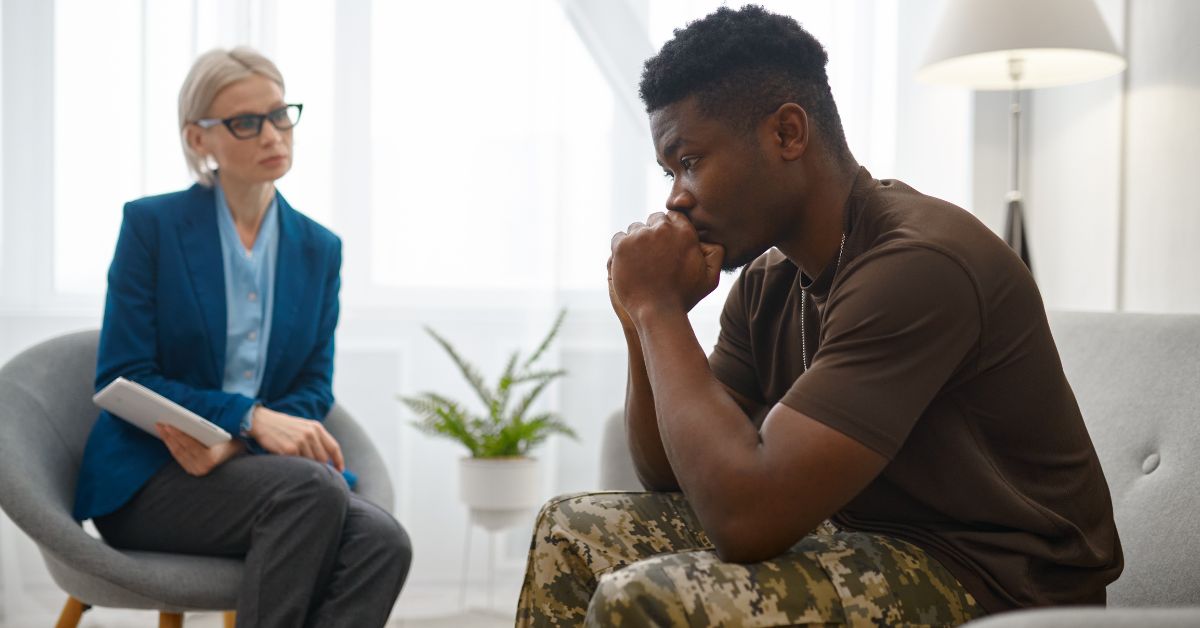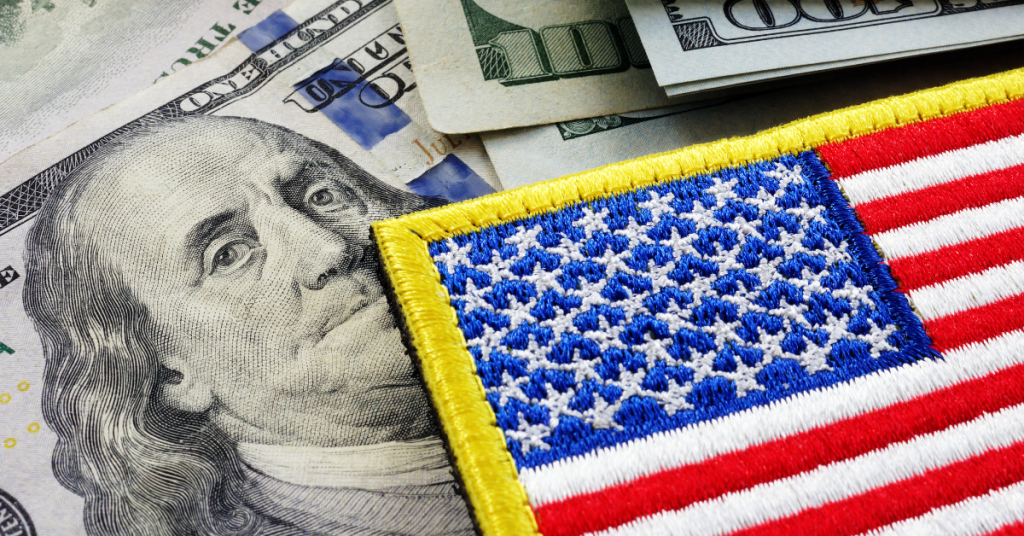Ever slipped and fallen financially, and wondered if you could ever get back on your feet? Ever asked yourself, “If I’ve had a bankruptcy, can I still get a VA loan?” Breathe deep and unknit that furrowed brow, because my friend, the answer is YES.
Yes, you can. Even after bankruptcy, you can march right back into homeownership, thanks to the good ol’ Veteran’s Affairs loan, also known as VA loans. Sounds like magic, doesn’t it? Well, it’s not all fairy dust and unicorns, there are rules and timelines. But don’t worry your pretty mind, I’ve got you covered.
Gather round, soldier, and tune into this game of financial Monopoly right here, as we discuss the fascinating world of securing a loan after bankruptcy. It’s your “get-out-of-jail-free” card in real-life Monopoly. Let’s get you back in the game!
Understanding VA Home Loan and Bankruptcy
Like your reliable old compass, let’s get our bearings right about what a VA home loan is. Ideally, it’s a mortgage loan guaranteed by the U.S. Department of Veterans Affairs (VA). If you’re a service member or veteran, this loan option is one of the most advantageous paths to homeownership.
Now, here’s how it connects to bankruptcy.
The decision to file for bankruptcy isn’t easy, but sometimes it’s necessary to clear the way for a healthier financial future. It might land a dent on your credit report but it doesn’t shut all doors. It’s more like taking a detour, rather than an absolute dead-end. You may still qualify for a VA home loan but the rules slightly change.
Types of Loan Bankruptcy: Chapter 7 and Chapter 13 Bankruptcy

Venturing through the intricate realm of bankruptcy? Your journey may well anchor in two essential harbors, the chapter 7 or chapter 13 bankruptcy.
Chapter 7 Bankruptcy
Think of Chapter 7 bankruptcy as a financial reboot.
- What it is: Chapter 7 wipes out most unsecured debts, cleaning up your financial slate.
- Timeline: It lasts about 3-6 months, a short pause in your financial journey.
- Impact on VA Loan: There’s a two-year ‘cooling-off period’ from the discharge date before you can obtain a VA mortgage loan.
Chapter 13 Bankruptcy
Now, switch gears to Chapter 13 bankruptcy, your fiscal workout regime.
- What it is: Instead of erasing your debts, Chapter 13 restructures them into a feasible payment plan.
- Duration: This financial ‘workout’ lasts between 3-5 years, the time you flex your repayment muscles.
- The Impact: You can secure a loan during Chapter 13 bankruptcy, with the trustee’s approval, and by demonstrating a satisfactory payment history for at least 12 months.
How to Get a VA Loan after Bankruptcy
From years of guiding veterans through financial hurdles, I know that obtaining a loan after a bankruptcy filing may seem like cracking the code to a difficult puzzle: challenging at first but solvable with patience and persistence. So, let’s embark on the journey of understanding this roadmap together because with the right steps, unlocking homeownership is entirely within reach!
Timing: Healing Period
First things first, timing is crucial. Remember, healing takes time.
- Chapter 7 Bankruptcy: After a Chapter 7 discharge, the VA requires a two-year waiting period before you can apply for a VA loan.
- Chapter 13 Bankruptcy: You can apply for a loan during Chapter 13 bankruptcy, provided you have been making satisfactory repayments for at least 12 months and the trustee approves.
Credit Rebuilding
Next, comes the financial rehab routine, rebuilding your bad credit score.
- Stay Positive: Maintain positive credit activities like prompt bill payments and responsible credit card usage.
- Limit Debt: Keep your debts low as compared to your total available credit. Your credit score yo-yos with your debt-to-limit ratio.
Qualify for a VA Loan
It’s not just about qualifying for a VA loan after bankruptcy or foreclosure, it’s about how you master the art of coming back stronger. Solidifying your credit scores, maintaining a steady income, and obtaining a Certificate of Eligibility (COE) are key steps in your financial recovery and path to securing VA loan benefits.
Now, you’re ready to hit the bullseye, apply and be eligible for a VA loan.
- Obtain a COE: Get a Certificate of Eligibility (COE), validating your ability to get a loan.
- Seek Preapproval: Before house hunting, get preapproved for a loan. Preapproval displays your purchasing power and sets realistic expectations for you and the sellers.
- House Hunt: Now, springs the fun part – house hunting! Find a VA-approved property, sign a purchase agreement, and get your loan appraisal done.
- Underwriting and Closing: Once the underwriting process and final inspections are done, you’re all set to close your loan.
Remember that, if necessary, including a cosigner in your loan could enhance your qualification prospects, especially if they have a strong credit and income profile. Now, you’re ready to approach a reputable VA lender to initiate your loan application, get approved for a VA loan, and buy a home!
Tips to Successfully Get a VA Home Loan after Bankruptcy
Drawing from my countless experience in guiding people toward financial recovery, I’ve put together some essential tips for securing a VA home loan post-bankruptcy. When striving to reclaim your ground in the homeownership field, a solid game plan can significantly shift the odds in your favor.
With a commitment to rebuilding consistent income and a strong credit score, you’re already paving the way toward your homeownership dream. I’ve seen it happen time and again, and you can do it too!
Here’s a list for a better understanding of the key tips for a successful loan:
- Good Credit Score: Vital to display financial responsibility and future ability to service your loan.
- Stable Employment: Consistent income supports your financial credibility.
- Financial Record Scrutiny: Make sure you have not defaulted on any other loans to exhibit good financial behavior.
VA Home Loans, Mortgage, and Foreclosure
When we say VA home loans and mortgages, they are like two peas in a pod. Foreclosure, however, is like a stealthy ninja who swings into the scene and complicates things.
This happens when a borrower fails to meet their loan agreements and the financial institution takes possession of the property. A foreclosure can impact your ability to obtain another loan but it isn’t the final curtain call.
Embracing the VA Loan Journey After Bankruptcy

Experiencing bankruptcy can be tough, and it can feel like a setback. But it’s not the end of your financial journey, far from it! It’s a fork in the road that forces you to take a closer look at your money habits. While it can be a rough ride, it also sets the stage for a major comeback, a chance to rebuild stronger financial foundations.
Navigating through this loan process needs time, effort, and both feet on the ground, but with a little bit of patience, you can do it. Remember, every step you take towards improving your credit is a step closer to securing that VA mortgage loan and, ultimately, owning a home.
So keep your chin up and push forward, because owning your dream home is closer than you think.
Frequently Asked Questions on VA Loan After Bankruptcy
How long is the bankruptcy VA waiting period?
The VA waiting period after a bankruptcy is two years. This is the time you need to wait after a Chapter 7 bankruptcy discharge.
What is Chapter 7 in bankruptcy?
Chapter 7 bankruptcy, also known as ‘liquidation’, is where most of your debts will be discharged. This means you can start fresh, but certain remaining debts like student loans and alimony are not typically included.
What happens when you declare bankruptcy?
When you declare bankruptcy, it allows you to eliminate or repay some or all of your debt under the protection of the federal bankruptcy court. It can provide you relief from debt but may also impact your credit and ability to secure loans in the future with mortgage lenders.
How long is a Chapter 7 bankruptcy?
A Chapter 7 bankruptcy typically lasts between 3 to 6 months. For home buyers, this is the bankruptcy process where your assets could be sold off to repay creditors and most of your unsecured debts are wiped out.






